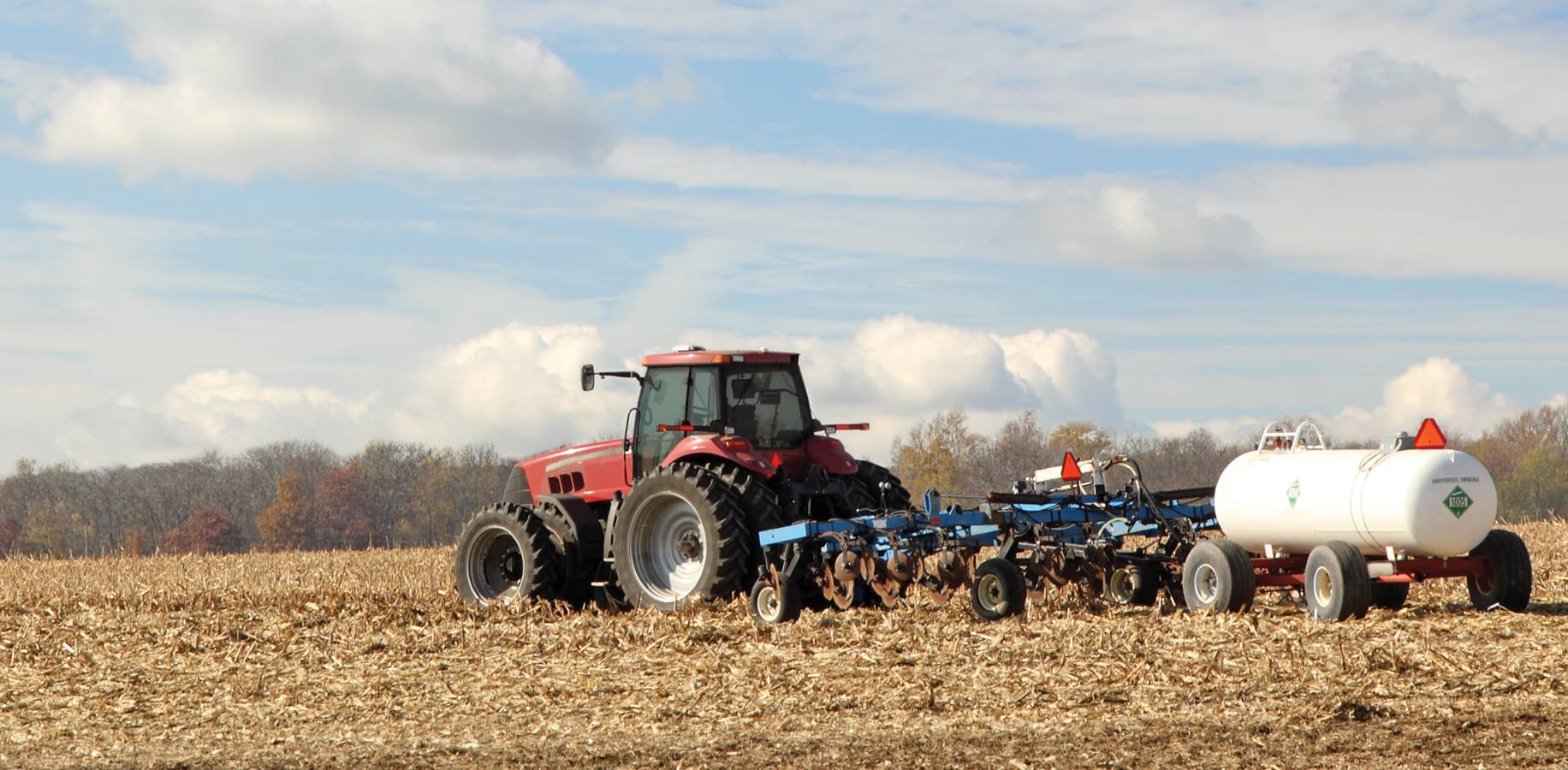
Latest Resources
December 21, 2023
Agronomy Answers: Considerations for Fall Anhydrous Ammonia Applications to Dry Ground
With several regions across the U.S. receiving little precipitation over the last few months, many growers may be questioning how the lack of rain may impact their fall anhydrous ammonia (NH3) applications
To help answer several of the most common questions and considerations for growers this fall, we tapped into the Koch Agronomic Services agronomy team to share their knowledge on nitrogen management.
Q: Is there enough water for anhydrous to convert to ammonium?
A: Yes, even when the soil is dry there is enough moisture for the anhydrous ammonia chemical reaction to occur. This means NH3 reacts with water to convert to ammonium which will be held by the soil.
Q: What is the biggest risk for applications on dry ground?
A: Dry soils affect physical characteristics of the application. Poor closure of injection slots may result in loss of applied nitrogen (ammonia gas losses to atmosphere). Very heavy soils, which commonly receive fall anhydrous ammonia applications, can develop big clods of soil when they are dry. This can lead to large channels where ammonia gas losses can occur.
Q: What are some watchouts and recommendations for fall NH3 applications on dry ground?
A: There are multiple strategies to increase the efficiency of fall nitrogen applications on dry soils. We’ve included several of the most common strategies growers could implement on their operation.
- Utilize the 4Rs Nutrient Stewardship framework. Thinking about any nitrogen applications, it is recommended growers start with the 4Rs of Nutrient Stewardship – right source, right rate, right time and right place. Nitrogen should be managed as a system. For example, when applying anhydrous ammonia in the fall, stabilize this source with a nitrification inhibitor like CENTURO™ nitrogen stabilizer and consider a split application strategy, reserving some of the planned nitrogen for after the crop is established.
- Deeper application of the anhydrous ammonia can result in faster conversion of ammonia to ammonium due to higher moisture in deeper profiles of the soil. However, deeper applications can result in formation of soil clods that can result in gaseous losses of applied nitrogen.
- Protecting the area of injection by closing the application slot can be an effective practice. The use of closing disks or sealing wings can result in reduced losses.
- Add a nitrification inhibitor for fall-applied ammonia. Using a nitrification inhibitor, such as CENTURO, can provide protection against leaching and denitrification losses in the fall and into the spring, helping maximize nitrogen availability for crop uptake come spring.
- A very effective strategy for growers is to do a "test run" without applying nitrogen. A test run can will allow the grower to see if soils are too cloddy or if the closure system is working properly.
Q: What if fall anhydrous ammonia applications are not possible? What should be a grower’s plan B?
A: Spring NH3 applications are possible if soil and weather conditions are suitable for application. With unpredictable spring rains and weather, utilizing a nitrification inhibitor such as CENTURO can help reduce the risk of leaching and denitrification losses. In a study across three years in Nebraska, Illinois and Missouri, spring-applied CENTURO-treated ammonia increased corn yield by an average of 6 bu/A compared to untreated spring-applied ammonia.1
If in-season logistics are a challenge for a grower in the spring, they should consider an alternative nitrogen source to better fit their needs. Switching to SUPERU™, a finished 46-0-0 fertilizer, offers growers not only the protection against all three forms of nitrogen loss but also allows for higher fan speed resulting in wider spread patterns – saving valuable time.
For information or to learn more about how KAS solutions can be a fit for a grower’s operation contact your KAS representative today.
1The underlying data was provided by University of Nebraska, University of Missouri, and the Illinois Fertilizer and Chemical Association under Research Trial Financial Support Agreements with Koch Agronomic Services, LLC. Neither the universities or institutions, nor the individual researchers referenced, endorse or recommend any product or service. Improvements in nutrient use efficiency may not be observed in all cases.
CENTURO is not registered for sale or use in all states. Contact your state pesticide regulatory agency to determine if a product is registered for sale or use in your state.


